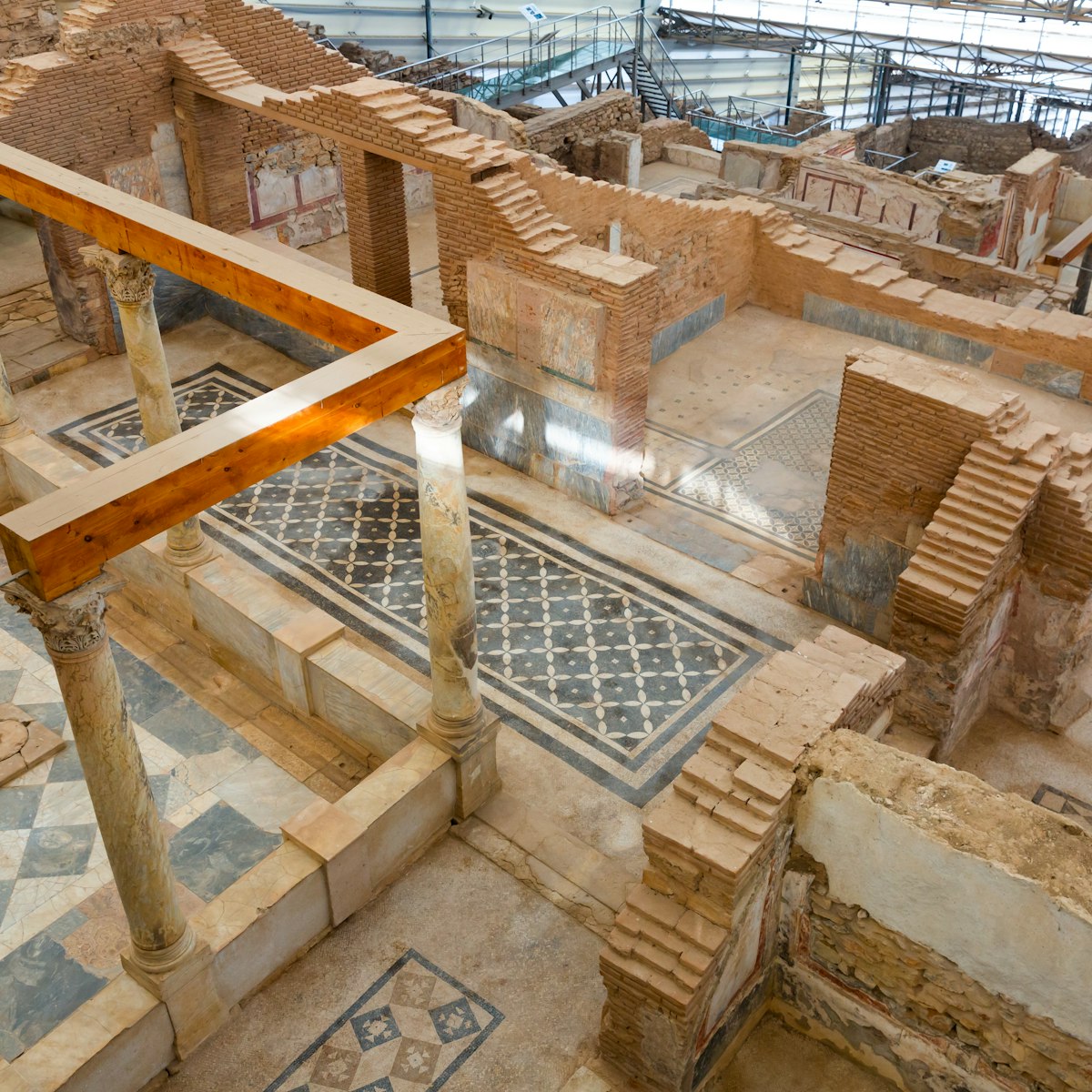The road to/from Ephesus' Lower Gate passes this cave tomb on Panayır Dağı (Mt Pion), where seven young legendary Christians, persecuted by Emperor Decius in AD 250, are thought to be buried. Walk 200m south from the car park to see the ruins, following the hill path to the right. The grotto is clearly visible through a wire fence, though much must be left to the imagination.
The story goes that, having refused to recant their Christian beliefs, the seven young men gave their possessions to the poor and went to pray in this hilltop cave. They soon fell asleep, and Decius had the cave sealed. When the men were awoken centuries later by a landowner seeking to use the cave, they felt they had slept but a day, and warily sent someone into pagan Ephesus. The dazed young emissary was just as surprised to find Christian churches there as the Ephesians were to find someone presenting 200-year-old coins. The local bishop, Stephen, met the Seven Sleepers, who later died and were buried in their cave around 450.
The bishop quickly proclaimed the miracle, immediately creating a Byzantine place of pilgrimage that would last for over 1000 years. The legend became famous as far away as France and England, and there's even a Koranic variation attracting Muslim pilgrims.
Excavation, begun in 1927, has unearthed hundreds of 4th- and 5th-century terracotta oil lamps, decorated with Christian and, in some cases, pagan symbols. They indicate that the scores of rock-carved graves in this necropolis were important to many people for many centuries.
The Grotto of the Seven Sleepers is a couple of kilometres east of the Lower Gate and best visited after touring Meryemana and Ephesus. Frequent dolmuşes link Selçuk with Çamlık (₺5, 20 minutes), which is 8.5km to the southeast.





